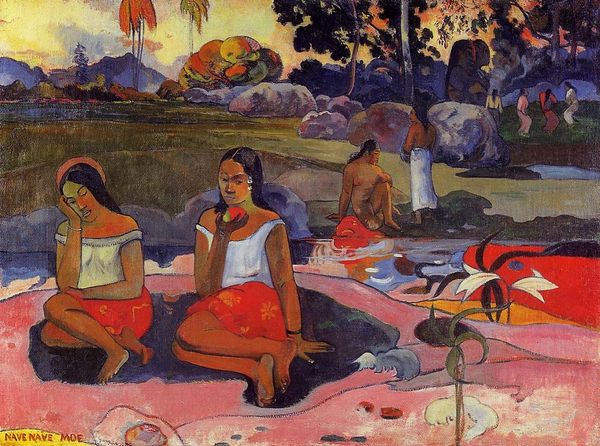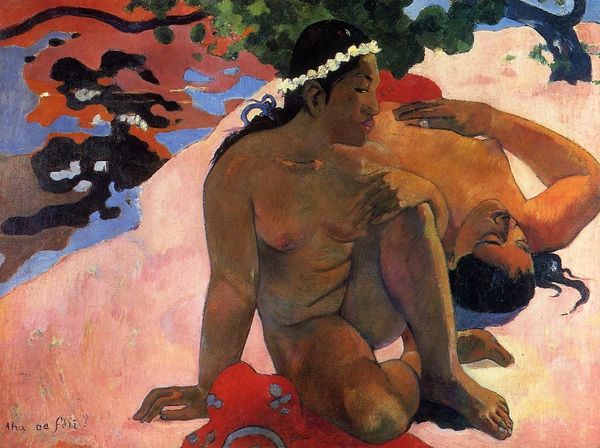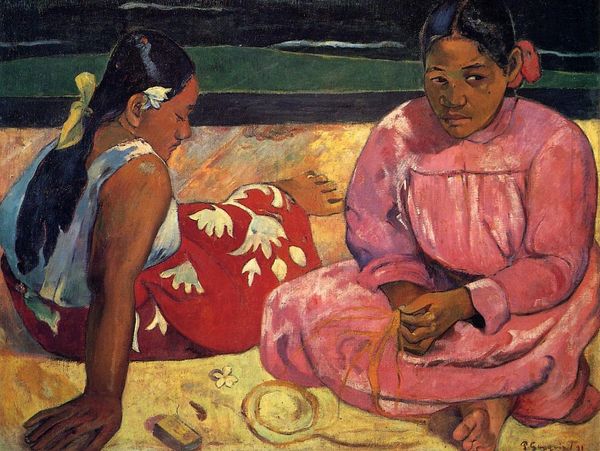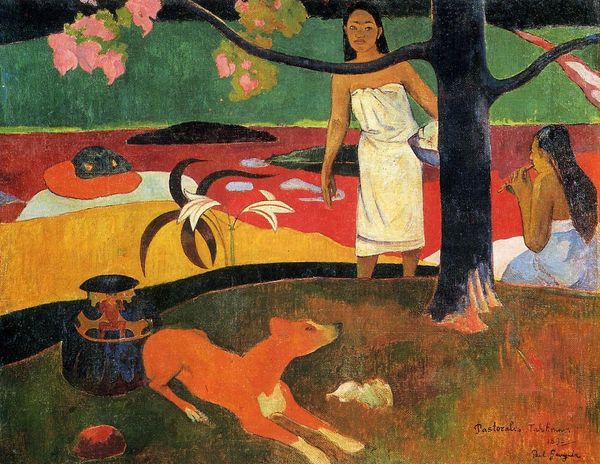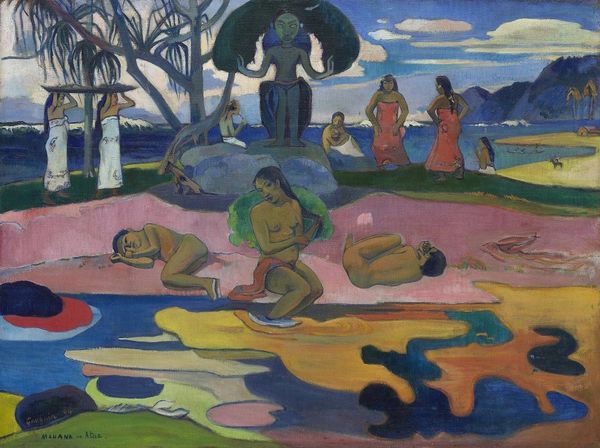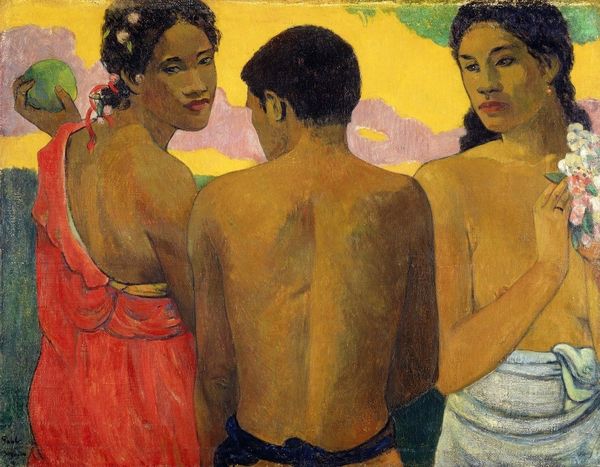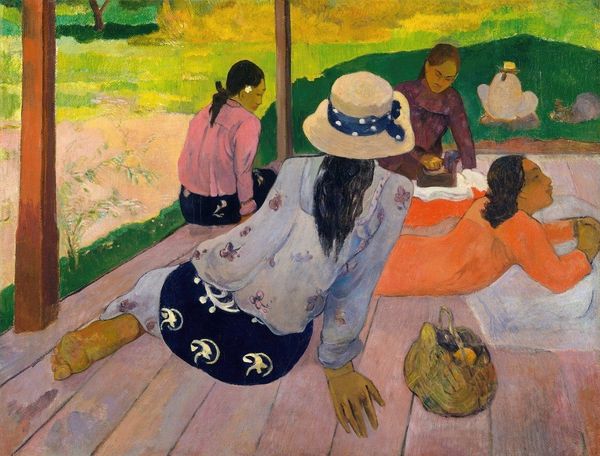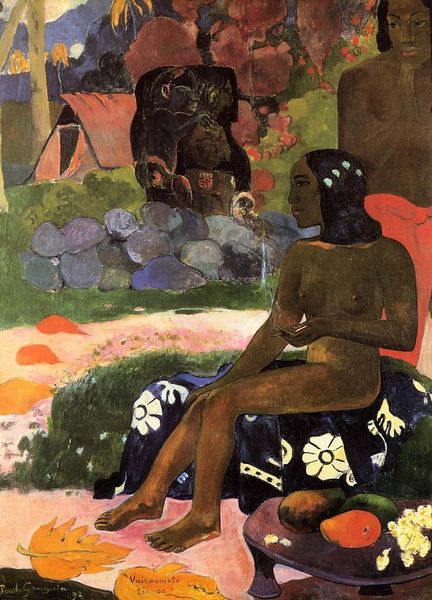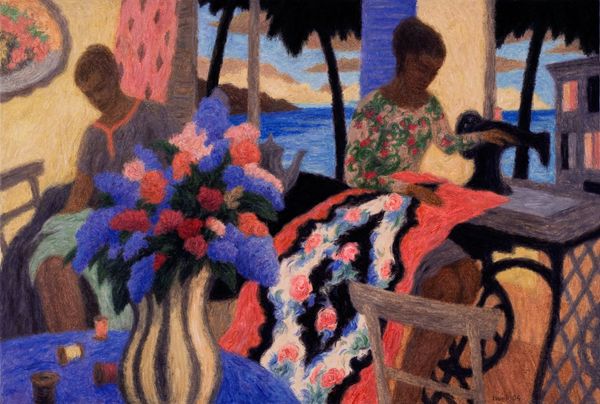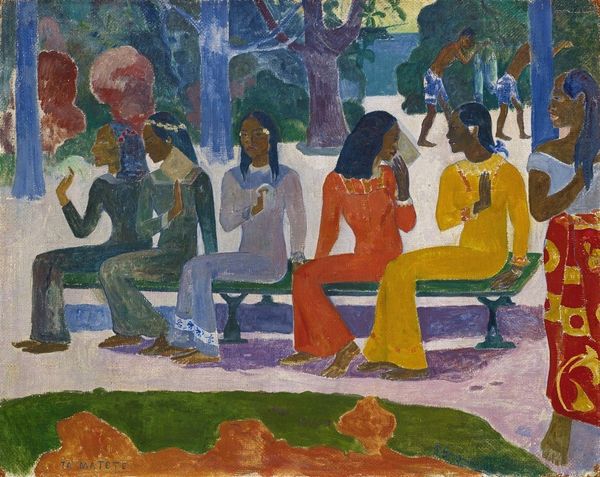
oil-paint
#
portrait
#
oil-paint
#
landscape
#
oil painting
#
naïve-art
#
naive art
#
orientalism
#
genre-painting
#
post-impressionism
#
nude
#
portrait art
Dimensions: 60 x 98 cm
Copyright: Public domain
Editor: Here we have Paul Gauguin's "Reclining Tahitian Women," painted in 1894, created with oil on canvas. What strikes me most is how Gauguin's use of flattened perspective and color creates this very dreamlike atmosphere. What elements stand out to you? Curator: Indeed. The formal arrangement presents a compelling study in contrasts. Notice how Gauguin manipulates the relationship between the foreground figures and the background figures with unnatural poses. Observe the flattened space and the unnatural color harmonies—mauves, oranges, blues. It’s as if we are witnessing a theatrical performance rather than an observation of reality. Do you notice any tension between line and plane? Editor: I see what you mean. The black tree trunk slashes across the painting creating a deep line; The solid, flat fields of color used for the clothing and bodies seem to sit within the defined boundary of the line but appear flat. It almost looks like he's playing with our perceptions of space, challenging what a "realistic" landscape is. Is he playing with perception on purpose? Curator: Undoubtedly. Gauguin eschews traditional techniques for modeling form and creating depth; it can be understood that this disruption results in a powerful tension, inviting contemplation on representation itself. Editor: That’s a great observation. Thinking about the construction and style opens a door to other discussions, that are definitely beyond what I originally considered when viewing the painting. Curator: It is the materiality and its arrangements in a painting which reveal all its contents, rather than merely the subject matter.
Comments
No comments
Be the first to comment and join the conversation on the ultimate creative platform.

